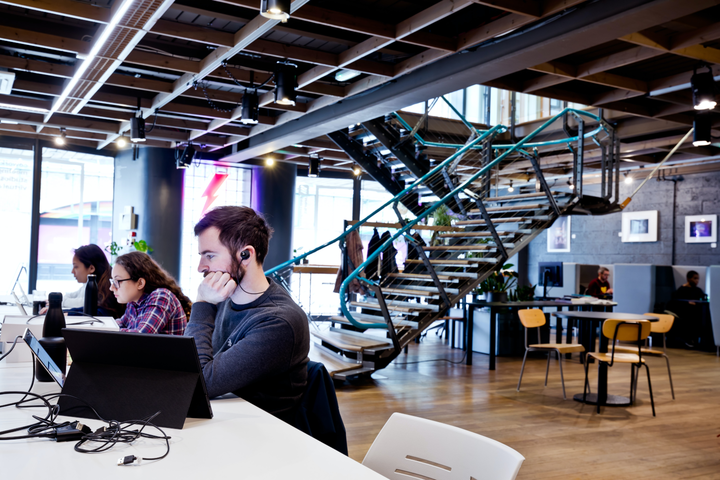So what is Hot Desking?
Hot desking is a flexible office arrangement where employees do not have assigned desks but instead choose from a pool of available workspaces each day. This concept encourages a more dynamic and collaborative work environment, as employees are not tethered to a fixed location. The primary idea is to optimise space utilisation and promote a more agile and interactive workplace.
Benefits of Hot Desking:
Flexibility and Collaboration: Hot desking fosters a dynamic work culture where employees are not tethered to a specific desk. This encourages collaboration, as individuals can sit next to different colleagues each day, leading to increased cross-functional interactions and idea exchange.
Cost Savings: As companies reduce the amount of fixed office space, they can cut costs associated with maintenance, utilities, and equipment.
Adaptability to Remote Work: Hot desking aligns with the growing trend of remote and flexible work. Employees who split their time between the office and remote locations can easily transition between workstations when they are on-site.
Resource Optimisation: In hot desking setups, resources like meeting rooms and shared amenities are efficiently used, as they are allocated based on actual needs rather than predetermined schedules.
Considerations and Challenges:
While hot desking presents several advantages, it might not be suitable for every organisation or individual. Some considerations include:
Lack of Personalisation: Hot desking can lead to a lack of personal space and the ability to personalise workstations. Some employees may find it challenging to adapt to an environment where they do not have a consistent workspace.
Potential for Disruption: An open workspace can lead to increased noise levels and disruptions. While collaboration is encouraged, excessive noise can be detrimental to tasks that require concentration.
Security Concerns: In environments where sensitive information is handled, the lack of fixed workspaces can pose security challenges. Companies need robust policies and technologies to address data security concerns associated with hot desking.
Resistance to Change: Some employees may resist the shift from traditional, assigned workspaces to the more fluid nature of hot desking. Change management strategies are crucial to navigate this transition successfully.
Comparisons with Other Workplace Concepts:
Coworking: Coworking spaces are typically venues that bring together professionals from different companies work alongside each other, whereas hot desking is implemented within a specific organisation's premises for the employees of that organisation.
Desk Hotelling: Desk hotelling is a reservation-based system where employees schedule desks for specific periods. It provides more structure than hot desking, allowing employees to reserve a specific desk in advance.
Conclusion
A modern workplace would benefit from providing a mix of hot desking, desk hotelling, and breakout and meeting rooms to make the office a flexible hub for all employees and address the challenges discussed. As the business landscape continues to evolve, finding the right balance between hot desking and other flexible workspace practices becomes crucial for creating a productive and engaging work environment.
